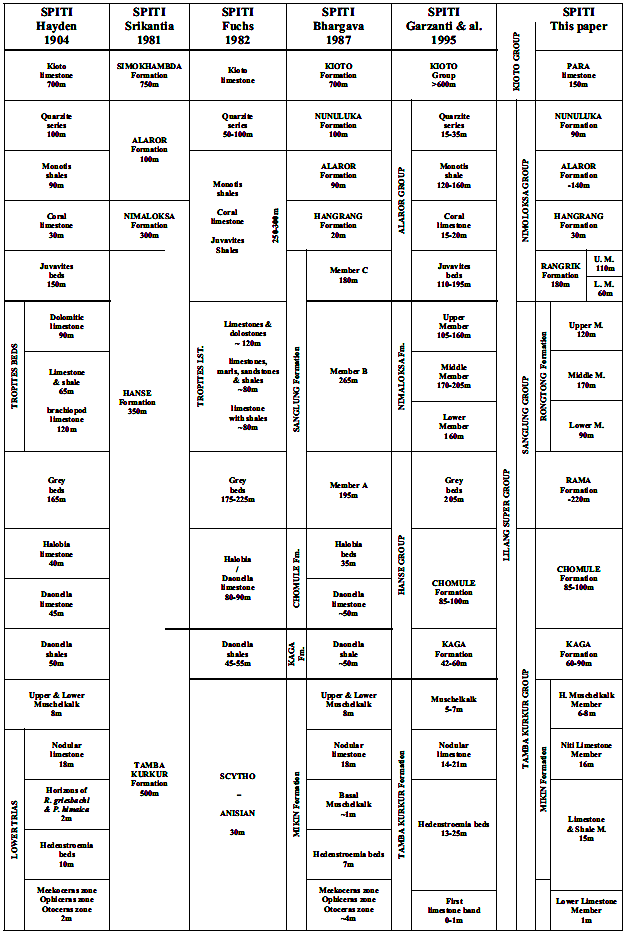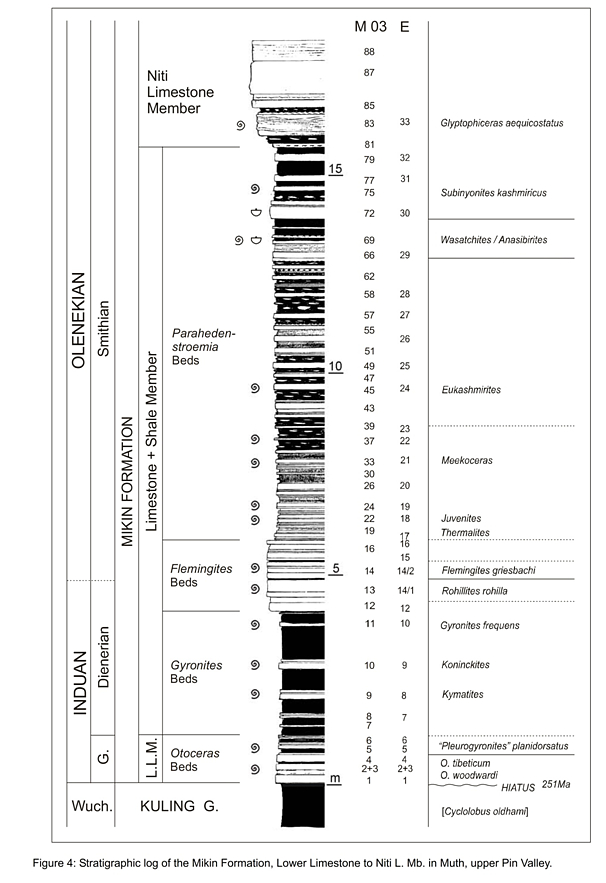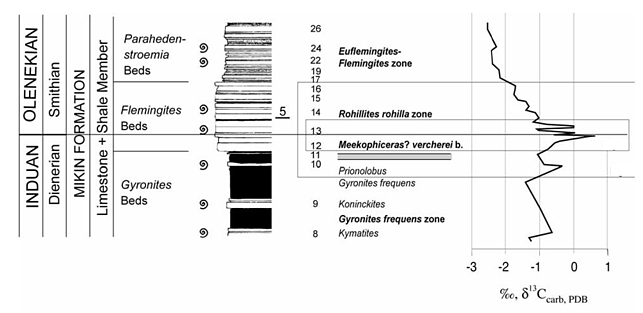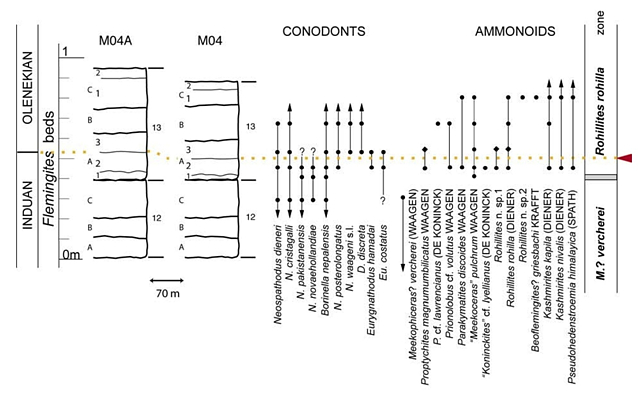Mikin Fm
Type Locality and Naming
Type section is in Mikin village in the Pin valley (Spiti). [Original Publication: Bhargava, O.N. 1987. Lithostratigraphy, Microfacies and Palaeoenvironment of Scythian- Dogger Lilang Group, Spiti Valley, Himachal Himalaya. Journal of the Palaeontological. Society of India, 32: 92-107]
Synonyms: It equals the upward succession of the classic Otoceras Zone, Ophiceras Zone, Meekoceras Zone (4 m total for these 3 zones), Hedestroemia Beds (7 m), Basal Muschelkalk (1 m), Nodular Limestone (18 m) and Lower & Upper Muschelkalk (8 m). Lower Tamba Kurkur Gr.
[Figure: Zanskar-Spiti-Kumaun region location (provided by Om Bhargava)]
[Figure 0: History of Triassic lithostratigraphic nomenclature of Spiti (after Bhargava et al., 2004)]
Lithology and Thickness
Limestone, nodular limestone, dolomite, minor shale. 40 m,
[Figure 1: Stratigraphic log of the Mikin Formation Lower Limestone to Niti L. Mb. in Muth, upper Pin Valley (after Bhargava et al., 2004)]
Relationships and Distribution
Lower contact
Lower contact with the Gungri Fm disconformable marked by a ferruginous bed.
Upper contact
Contact with the overlying Kaga Fm along a hard ground marking a sequence boundary.
Regional extent
Zanskar-Spiti and Himachal Pradesh to Kumaun-Garhwal region of Northwest Tethyan Himalaya
GeoJSON
Fossils
Ammonoids and Conodonts: Otoceras woodwardi, Ophiceras sakuntala, Hedestroemia mojsisovicsi, Pseudomonotis himalaica-Rhynchonella greisbachi, Neogondolella orientalis, N.carinata Zone Hindeodus typicalis, H. sp. cf. H. latidentatus, Neogodolella sp. cf. N. behnkeni, N. deflecta deflecta, N. deflecta subdeflecta, N. orientalis, and N.subcarinata subcarinata, Neospathodus kummeli Zone, Neospathodus dieneri, Neospathodus cristagalli, Neospathodus pakistanensis, Neospathodus waageni Zone, Neogodolella elongate, Neospathodus timorensis Zone, Keyserlingites sp, N. subcarinata changxingensis, N. carinata
[Figure 2: Vertical section, biostratigraphic zones and carbon isotope of the Mikin Formation at Mud locality in Spiti (after Krystyn et al., 2007)] showing Induan-Olenekian boundary in the lower part of the Mikin Formation]
[Figure 3: Vertical ranges of conodonts and ammonoids in the candidate GSSP section M04 (with additional ammonoid data from M04A, see text). Arrow marks the conodont based Induan-Olenekian boundary at the base of sub-bed 13A3 (after Krysten et al., 2007)]
Age
Depositional setting
Basal-most part represents a shallow-marine environment below mean wave base. The overlying sequence represents several shoaling cycles ranging from below the storm-wave base to below normal-wave base with mild bottom currents (Bhargava, 2008).
Additional Information
It equals the classic Otoceras, Ophiceras, Meekoceras zones, Hedestroemia Beds, Basal Muschelkalk, Nodular Limestone and Lower and Upper Muschelkalk




